Browning Citori 725 Sporting 12 Gauge Over/Under-Action Shotgun, Gloss Oil – 0135313010 For Sale
$3,079.99
The Browning Citori 725 Sporting 12 Gauge Over/Under-Action Shotgun epitomizes excellence in shotgun performance, catering to enthusiasts seeking top-tier shooting experiences. Building on John M. Browning’s B25 Superposed heritage, the Citori 725 features a sleek, modern low-profile receiver that maintains the durability of its predecessors, thanks to a robust full-width hinge pin and tapered locking bolt. It offers a meticulously balanced feel, fostering a seamless shooter-gun connection. Enhanced by a new Mechanical Trigger (FireLite) for exceptional lightness and tactile feedback, along with Inflex Technology for comfort during long sessions, the Citori 725 is suited for competitive and recreational shooters alike. Notable features include a customizable comb for precise aiming, a refined grade III/IV walnut stock with ergonomic enhancements, and elegant gold-accented engraving. The HiViz Pro Comp sight and ivory mid-bead facilitate superior target acquisition. The shotgun’s versatility is furthered by five extended choke tubes and the Invector-DS choke system, with ported barrels for recoil management and improved shot patterns, making it a prime choice for sporting clays and skeet shooting, while showcasing Browning’s dedication to superior engineering and craftsmanship.
What’s the difference between a Citori and an Citori 725?
The main differences between the Browning Citori and the Citori 725 shotguns lie in their design and features:
1. **Receiver Design and Profile**: The Citori 725 features a lower-profile receiver compared to the original Citori. This provides a more streamlined sighting plane and a slightly different feel when handling the shotgun.
2. **Trigger System**: The Citori 725 incorporates the Fire Lite Mechanical Trigger System, which offers a lighter and crisper trigger pull than the original Citori’s trigger mechanism.
3. **Barrel Technology**: The Citori 725 uses Browning’s Back-Bored Technology and included choke tubes are the Invector-DS (Double Seal) chokes, which are designed to provide better shot patterning and consistency.
4. **Recoil Pad**: The Citori 725 typically comes with the Inflex Technology Recoil Pad, which is designed to absorb recoil more effectively and improve shooting comfort.
5. **Weight and Balance**: Due to design updates and material differences, the Citori 725 might have a slightly altered weight and balance compared to the original Citori, affecting how it handles.
These differences make the Citori 725 a refined version with enhancements aimed at improving performance, handling, and comfort.
Is the Browning Citori worth the money?
The value of a Browning Citori can vary depending on individual preferences and needs. Generally, it is considered a high-quality shotgun known for its reliability, craftsmanship, and performance. Many shooters and collectors appreciate its classic design and durability, making it a worthwhile investment for those serious about shooting sports or hunting. However, whether it is “worth the money” ultimately depends on your budget, intended use, and personal preferences. If these factors align with what the Citori offers, it could be a valuable purchase.
Is the Browning Citori 725 a good gun?
The Browning Citori 725 is generally considered a good shotgun. It is well-regarded for its quality craftsmanship, reliable performance, and smooth handling. The gun is known for its low profile receiver, which many shooters appreciate for its improved ergonomics and balance. It also features Invector-DS choke tubes, which enhance shot pattern performance. Users often praise its durability and aesthetic appeal as well. However, as with any firearm, whether it is “good” can depend on individual preferences and specific use cases, such as hunting or competitive shooting. It is recommended to handle or test the firearm personally if possible to determine if it meets your expectations and needs.
What is a used Browning Citori worth?
The value of a used Browning Citori can vary significantly based on several factors, including its model, age, condition, and any special features or customizations. Generally, prices can range from around $1,000 to over $3,000. For a more accurate estimate, check current listings on firearm auction sites, visit local gun shops, or consult with online firearm appraisal services.
What does Browning Citori mean?
The Browning Citori refers to a line of double-barreled over-and-under shotguns manufactured by Browning Arms Company. Known for their reliability, craftsmanship, and durability, the Citori shotguns are popular among hunters and sport shooters. They come in various gauges and configurations, making them versatile for activities such as clay shooting and upland hunting. The name “Citori” is synonymous with quality and performance in the realm of shotguns.
What is the difference between Browning 725 and 825?
The Browning 725 and 825 are both over-under shotguns but differ primarily in their intended markets and some specific design features.
1. **Market and Availability:**
– The Browning 725 is primarily marketed and available in the United States.
– The Browning 825, however, is mainly available in the international market, especially in Europe and Asia.
2. **Design and Features:**
– Both models share similarities such as the low-profile action, mechanical trigger system, and modern recoil pad technology.
– Differences can often be found in the aesthetics, like engraving patterns or finish types, which are tailored to the regional tastes and preferences of their primary markets.
3. **Model Variants and Customization:**
– The 725 lineup includes models like the Citori 725 Sporting, Field, Trap, and Pro Trap, each designed for specific shooting sports and activities.
– The 825 may have different variant options or customized features relevant to the regions where it’s sold.
To know the precise differences for specific versions or years of manufacture, it would be advisable to consult Browning’s catalogs or a local dealer, as slight updates and changes can occur annually.
What are the grade levels of Browning Citori?
The Browning Citori is available in several grade levels, which typically include:
1. **Grade I** – The standard model with basic features and finishes.
2. **Grade II/III** – Features enhanced wood quality and better engravings.
3. **Grade IV** – Offers more intricate engravings and higher-quality wood.
4. **Grade V/VI (or Lightning/Feather models)** – Premium options with superior wood, intricate engravings, and additional features.
Higher grades offer more customization and aesthetic enhancements, such as upgraded wood and detailed engravings. The exact grading nomenclature can vary, so it’s best to check current offerings from Browning for specific details.
How long will a Browning Citori last?
The lifespan of a Browning Citori, like many well-made firearms, can vary greatly depending on factors such as usage, maintenance, and storage conditions. With proper care and regular maintenance, a Browning Citori can last a lifetime and potentially be passed down through generations. It’s not uncommon for these shotguns to function well for several decades if they are routinely cleaned and serviced. Regular inspections by a professional gunsmith can also help ensure longevity.
When was the Browning Citori 725 made?
The Browning Citori 725 was introduced in 2012.
What is the difference between Browning Citori grade 1 and grade 2?
The primary differences between the Browning Citori Grade 1 and Grade 2 shotguns typically lie in their aesthetic features and finishes, rather than their mechanical aspects. Here are the key differences:
1. **Wood Quality:**
– **Grade 1:** Typically features a standard-grade walnut stock and forearm.
– **Grade 2:** Often has higher-grade walnut with more intricate grain patterns, providing a more visually appealing appearance.
2. **Engraving and Finish:**
– **Grade 1:** Usually has simpler engravings and a more basic satin or gloss finish.
– **Grade 2:** Tends to feature more detailed engravings, often with more elaborate designs, and might have a higher-quality finish that enhances its overall look.
3. **Checkering:**
– **Grade 1:** Usually has standard checkering for grip.
– **Grade 2:** Might have more intricate checkering patterns for both functional and decorative purposes.
These differences generally result in Grade 2 models being more expensive due to the higher quality materials and additional craftsmanship involved. However, the core functionality and performance of the shotguns are typically consistent between the grades.
What is a 725 shotgun?
The 725 shotgun typically refers to the Browning Citori 725, which is an over-and-under shotgun. This model is known for its excellent craftsmanship, performance, and handling. The Citori 725 is an evolution of Browning’s popular Citori line, featuring a lower-profile receiver, mechanical trigger system, and improved ergonomics. It is available in various gauges, with different barrel lengths and configurations to suit activities like hunting and clay shooting.
When was the Browning Citori 725 made?
The Browning Citori 725 was introduced in 2012.
Does the Browning Citori 725 come with a case?
Yes, the Browning Citori 725 typically comes with a case when purchased new. However, it’s always a good idea to confirm this with the specific retailer or seller, as package contents may vary by location or dealer.
| Product Line | Citori 725 Sporting |
|---|---|
| Action | Over/Under |
| Trigger Type | Mechanical (FireLite) |
| Sights | Hi-Viz Pro-Comp Front |
| Barrel Material | Steel |
| Receiver Material | Steel |
| Stock Material | Black Walnut |
| Barrel Finish | Polished Blue |
| Receiver Finish | Silver Nitride |
| Stock Finish | Gloss Oil |
| Chamber Length | 3" |
| Length of Pull | 14-3/4" |
| Overall Length | 48" |
| Checkering | Cut 20 LPI |
| Chamber Finish | Chrome Plated |
| Recoil Pad | Inflex 2, Large |
| Trigger Finish | Gold Plated |
| Trigger Guard Engraving | Buck Mark in Gold |
| Trigger Guard Finish | Silver Nitride |
| Trigger Guard Material | Steel |
| Trigger Material | Alloy |
| Choke System | Invector-DS Extended |
| Chokes | Full, Improved Modified, Modified, Improved Cylinder, Skeet |
| Drop at Comb | 1-9/16" |
| Drop at Heel | 2-3/16" |
| Rib Width | 5/16" to 7/16" |
| Wood Grade | Grade III/IV |
| Barrel Type | Vent Rib |
| Hand Orientation | Right |
Be the first to review “Browning Citori 725 Sporting 12 Gauge Over/Under-Action Shotgun, Gloss Oil – 0135313010” Cancel reply
Related products
Browning Citori 725 Sporting
Browning Citori 725 Sporting 410 Gauge Over/Under-Action Shotgun, Gloss Oil – 013531912
Browning Citori 725 Sporting
Browning Citori 725 Sporting 20 Gauge Over/Under-Action Shotgun, Gloss Oil – 0135316009
Browning Citori 725 Sporting
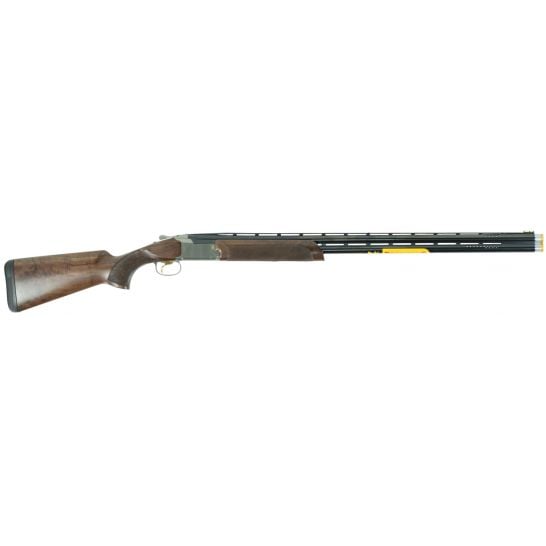
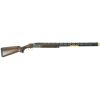
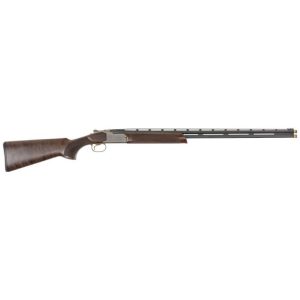
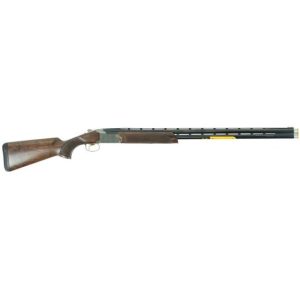
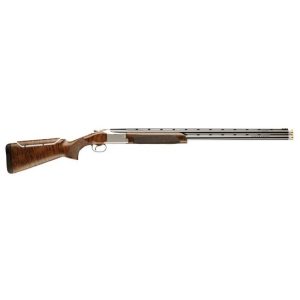
Reviews
There are no reviews yet.